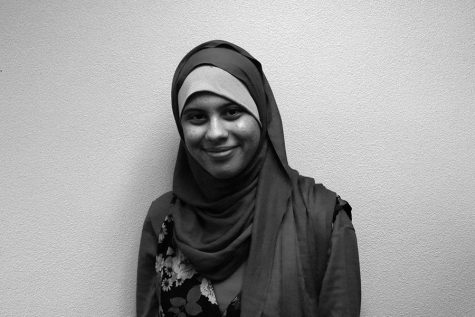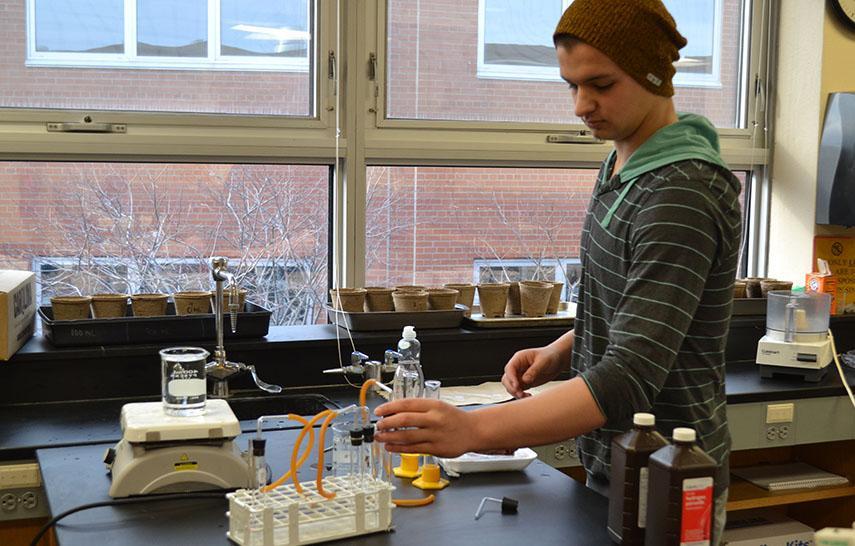IB Biology course finishes Internal Assessments
Classes work to explore more areas of biology with hands on experience
Senior Nate Stone experiments with liver for his IB Biology Internal Assessment. Students submitted their IAs March 7.
As senior Elise Bargman completes her IB Biology internal assessment, her process went according to what she originally planned .
“I (did) my internal assessment (in the area of) database based questions. (The process included) figuring out what variables affect firefly fighting in the Boston area,” Bargman said.
Bargman said she decided to report on Boston fireflies because she was able to explore more in computer science by connecting it to biology.
“I chose (to experiment with Boston fireflies) because I think lab work is cool but I’m more of a computer data kind of person,” Bargman said.
IB Biology teacher Julie Schilz said she grades her students’ internal assessments by following the IB science program’s standards.
“(Students) are graded according to the IB specific rubric from five different categories, which are personal interests, design, data collecting and processing, conclusion, and overall communication,” Schilz said.
According to Schilz, when focusing on a topic for an internal assessment, the process should be easy to follow and not complicated.
“Students (who) do really well usually have a simple topic, (and) their experiment is easily controlled and smaller scaled,” Schilz said.
Bargman said her process for observing Boston fireflies was narrowed down to continuous sorting of statistics.
“I’m going to control the variables, play around with spreadsheets and do some sort of correlation,” Bargman said.
Schilz said her favorite aspect of the internal assessments was how students were able to learn more about biology when researching topics in connection to their interests.
“It’s always really interesting to see what students come up based on their interests , and see how they go about doing it,” Schilz said.
Bargman said by connecting the scientific method to her interests, she became more aware of how fun science actually became to her.
“It’s certainly the most hands on, creative thing I’ve gotten to do in a science class, and it’s very fun,” Bargman said.
According to Bargman, the time taken to work on her internal assessment was a way to prepare for working on future labs.
“I think (it’s) good practice doing this stuff (in the lab) will help me in college,” Bargman said.

Hey everyone, I’m back! I feel really thankful for being a senior this year and moving forward toward what the future holds (although it feels a little...



